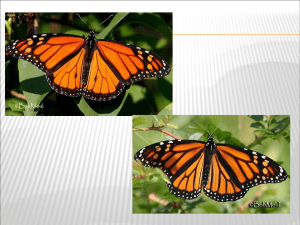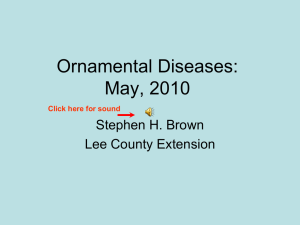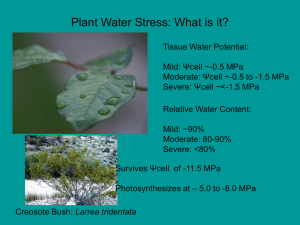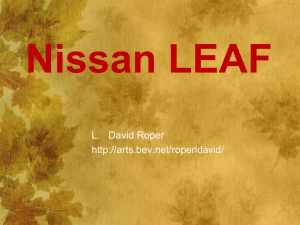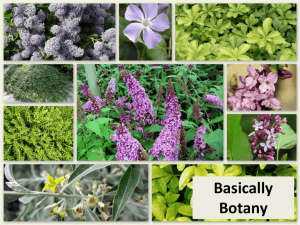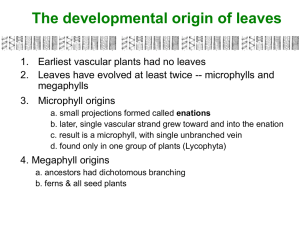MAIZE DISEASES
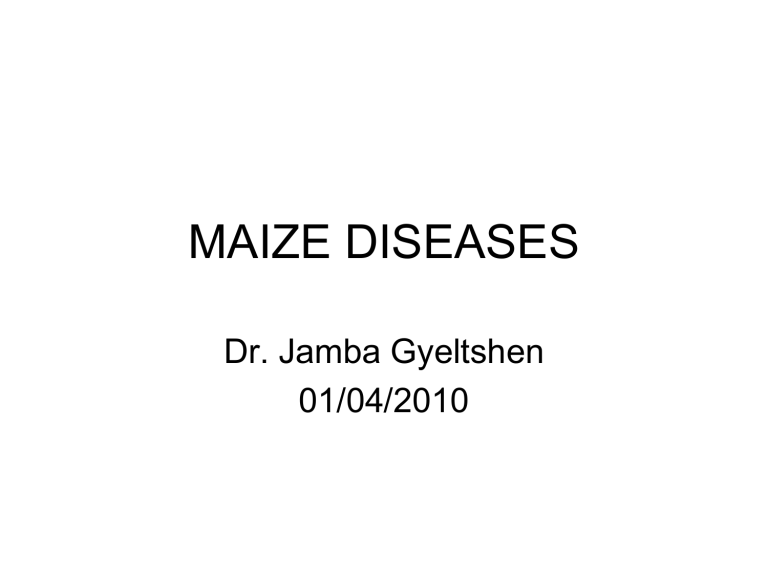
MAIZE DISEASES
Dr. Jamba Gyeltshen
01/04/2010
Maize Diseases
1. Turcicum leaf blight (Northern leaf blight) ( Exserohilum turcicum syn.
Helminthosporium turcicum )
2. Grey leaf spot ( Cercospora zeae-maydis )
1. Turcicum leaf blight
Northern Corn Leaf Blight
( Exserohilum turcicum)
Syn.
Helminthosporium turcicum
TLB Pathogen
Anamorph (asexual phase)
• Exserohilum turcicum (syn.
Helminthosporium turcicum )
Teliomorph (sexual phase)
• Setosphaeria turcica
1. Turcicum Leaf Blight (TLB)
Conidia are 3 - 8 septate, spindle-shaped, and have a protruding hilum.
TLB
• Major constraint to maize production where humidity is high and temperatures moderate (17 to 27 °C).
• Cause yield losses as high as 70%
TLB Distribution
TLB Symptoms
• Cigar shaped lesions that are 3 to 15 cm long
• Lesions are elliptical and tan in color, developing distinct dark areas as the fungus sporulates
• Lesions typically first appear on lower leaves and spread upwards.
• Under severe infection, lesions may coalesce, blighting the entire leaf.
TLB Symptoms
Disease cycle
• Overwinters as mycelium and chlamydospores in infected crop debris.
• Fungi in crop debris sporulate in response to higher temperatures and humidity.
• Spores (conidia) are then disseminated by wind and rain splash to freshly planted maize. Conidia can be carried vast distances in the wind.
• They germinate in temperatures ranging from 17 to 27°C and during periods of extended leaf wetness (6 to 18 hours), infecting host tissue.
• Secondary cycles of disease occur where conidia produced in disease lesions are disseminated within the crop and to other fields by rain splash and wind.
Damage
• Mechanism of damage: Yield loss is caused predominantly through loss of photosynthetic leaf area due to blighting. Under severe infestation, sugars can be diverted from the stalks for grain filling leading to crop lodging.
• When damage is important: If Turcicum leaf blight establishes before silking and spreads to upper leaves during grain filling, severe yield losses can occur.
• Economic importance: Yield losses as high as
70% have been recorded but typically range from 15 to 30%.
Disease management
• Grow resistant varieties: Yangtsepa
• Management of overwintering infected crop residue will reduce the amount of available inoculum at the onset of the subsequent growing season.
• Fungicide application can effectively control
Turcicum leaf blight when applied at the right time.
• Fungicide should be applied when lesions first become visible on the lower leaves.
2. Grey leaf spot
Pathogen: Cercospora zea-maydis and
Cercospora zeina
• Gray leaf spot (GLS) is a serious foliar disease of maize in many temperate and tropical highland regions of the world.
GLS Symptoms
• GLS has characteristic rectangular, tan-colored lesions that are contained within leaf margins, as the fungi is not able to penetrate sclerenchyma tissue in the leaf veins.
• As lesions mature they assume a graying cast due to sporulation of the fungi. Lesions are typically 2-4 × 10-
60mm in size and usually develop on the lower leaves, gradually spreading upwards on the plant during the season. Under severe disease pressure, entire leaves can be blighted and lesions can develop on cob sheaths.
Symptoms of GLS caused by Cercospora zeae-maydis and C. zeina are indistinguishable.
Symptoms as seen against light
GLS symptoms
GLS symptom severity
GLS conidia
Disease development
• In spring, conidia (spores) are produced and disseminated to corn plants by wind and rain splashing. They require several days of high relative humidity to successfully germinate and infect corn leaves. Several weeks may be needed for the development of mature lesions on leaves. Conidia for secondary spread are produced from two to four weeks after initial leaf infection
Management
• Damage, disease cycle and management are same as TLB
References
• http://www.apsnet.org/online/feature/grayl eaf/gallery.htm
• http://www.ars.usda.gov/sp2UserFiles/Pla ce/36021000/dunkle7.jpg
